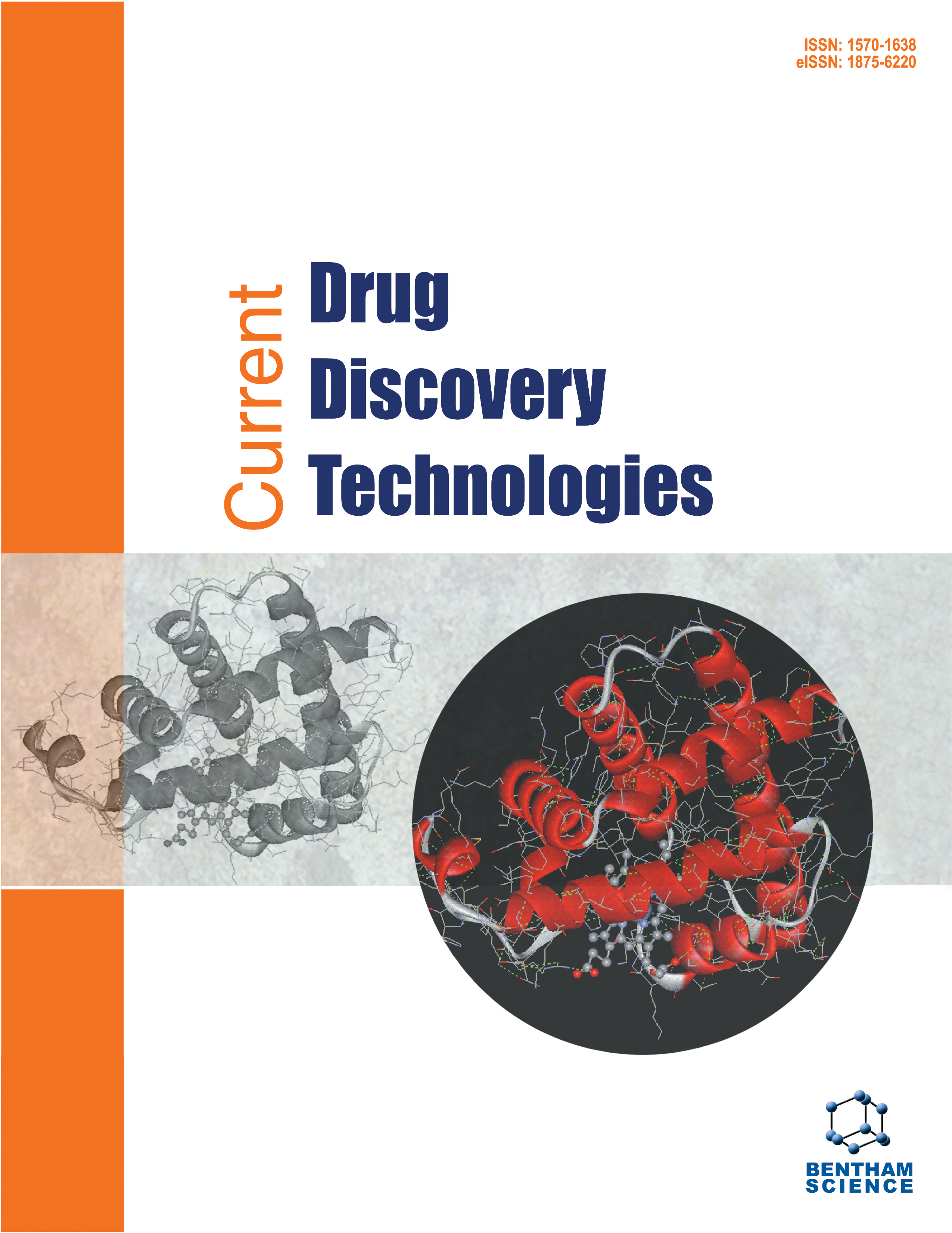- Home
- A-Z Publications
- Current Drug Discovery Technologies
- Previous Issues
- Volume 10, Issue 4, 2013
Current Drug Discovery Technologies - Volume 10, Issue 4, 2013
Volume 10, Issue 4, 2013
-
-
Phylogenetic Methods in Drug Discovery
More LessIn recent decades, growth of computing power has facilitated powerful techniques for reconstructing evolutionary relationships from online genetic and proteomic databases. These methods are useful tools for pharmacologists for analyzing relationships between receptors and associated enzymes. Phylogenetic analysis can help generate hypotheses and leads for experimentation. Reconstruction of molecular phylogenies f Read More
-
-
-
A Systematic Review of the Uterine Relaxant Effect of Potassium Channel Openers
More LessDespite significant advances in the understanding of uterine physiology, preterm labor is still a predicament with a high incidence. The mechanism that triggers uterine contraction is currently unclear. ATP-sensitive potassium (KATP) channel stimulation has an inhibitory effect on uterine contractile pursuit through hyperpolarization of myometrial cells where KATP channels openers (KCOs) act as a tocolytic. In this review, Read More
-
-
-
Formulation and Evaluation of Niosomal Nasal Drug Delivery System of Folic Acid for Brain Targeting
More LessAuthors: Nagaraju Ravouru, Pallavi Kondreddy, Deepthy Korakanchi and Haritha M.Nasal mucosa offers advantages to deliver drugs to brain via olfactory route thus provides rapid onset of drug action and hence faster therapeutic effect. Therefore, various strategies have been proposed to improve the delivery of different drugs to brain including liposomes, colloidal drug carriers, micelles, chimeric peptide technology and nanotechnology through nasal route. The low blood level of folates is the primary ca Read More
-
-
-
A Phosphoproteomics Approach to Identify Candidate Kinase Inhibitor Pathway Targets in Lymphoma-Like Primary Cell Lines
More LessMass spectrometry-based technologies are increasingly utilized in drug discovery. Phosphoproteomics in particular has allowed for the efficient surveying of phosphotyrosine signaling pathways involved in various diseases states, most prominently in cancer. We describe a phosphotyrosine-based proteomics screening approach to identify signaling pathways and tyrosine kinase inhibitor targets in highly tumorigenic human ly Read More
-
-
-
Design and Characterization of Microcrystals for Enhanced Dissolution Rate of Celecoxib
More LessAuthors: Lakshmi K, M Pranav Kumar Reddy and Rajesh KazaPoor aqueous solubility and bioavailability of drugs are one of the important factors affecting the absorption of drugs and consequently their therapeutic effectiveness. Celecoxib is a widely used anti-inflammatory agent, with special use in rheumatoid arthritis. It belongs to biopharmaceutical classification system (BCS) class II drug with low solubility and high permeability. The present study was aimed to pre Read More
-
-
-
Effects of N-Acetyl-L-Cysteine and Hyaluronic Acid on HBOC-201-Induced Systemic and Cerebral Vasoconstriction in the Rat
More LessHemoglobin-based oxygen carrier-201 (HBOC) was developed as a resuscitative fluid but concerns exist over potentially adverse vasoconstriction. This study evaluated whether concurrent IV (intra venous) N-acetyl-L-cysteine (NAC) or hyaluronic acid (HA) would attenuate HBOC-associated vasoconstriction, assessed by systemic blood pressures and cerebral pial microvasculature, when administered to healthy, anesthetized Read More
-
Volumes & issues
-
Volume 22 (2025)
-
Volume 21 (2024)
-
Volume 20 (2023)
-
Volume 19 (2022)
-
Volume 18 (2021)
-
Volume 17 (2020)
-
Volume 16 (2019)
-
Volume 15 (2018)
-
Volume 14 (2017)
-
Volume 13 (2016)
-
Volume 12 (2015)
-
Volume 11 (2014)
-
Volume 10 (2013)
-
Volume 9 (2012)
-
Volume 8 (2011)
-
Volume 7 (2010)
-
Volume 6 (2009)
-
Volume 5 (2008)
-
Volume 4 (2007)
-
Volume 3 (2006)
-
Volume 2 (2005)
-
Volume 1 (2004)
Most Read This Month
Article
content/journals/cddt
Journal
10
5
false
en


